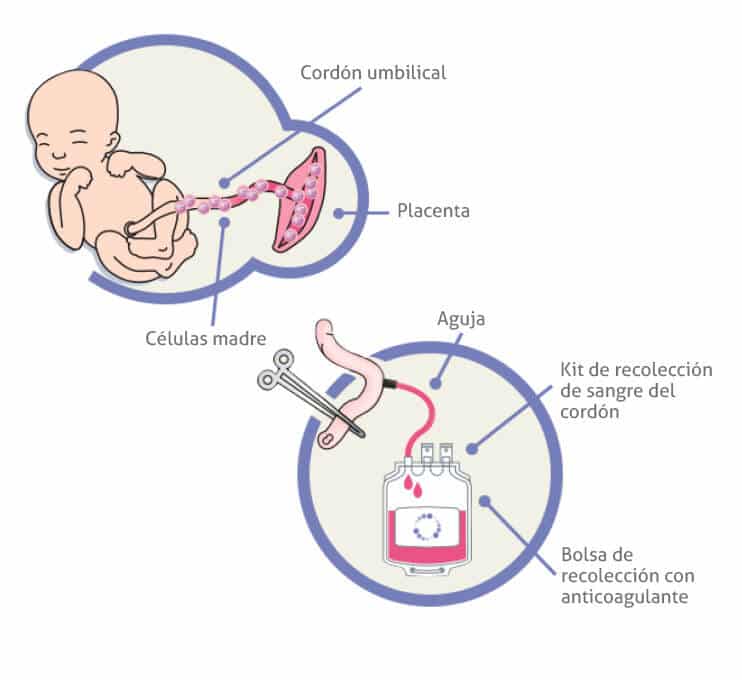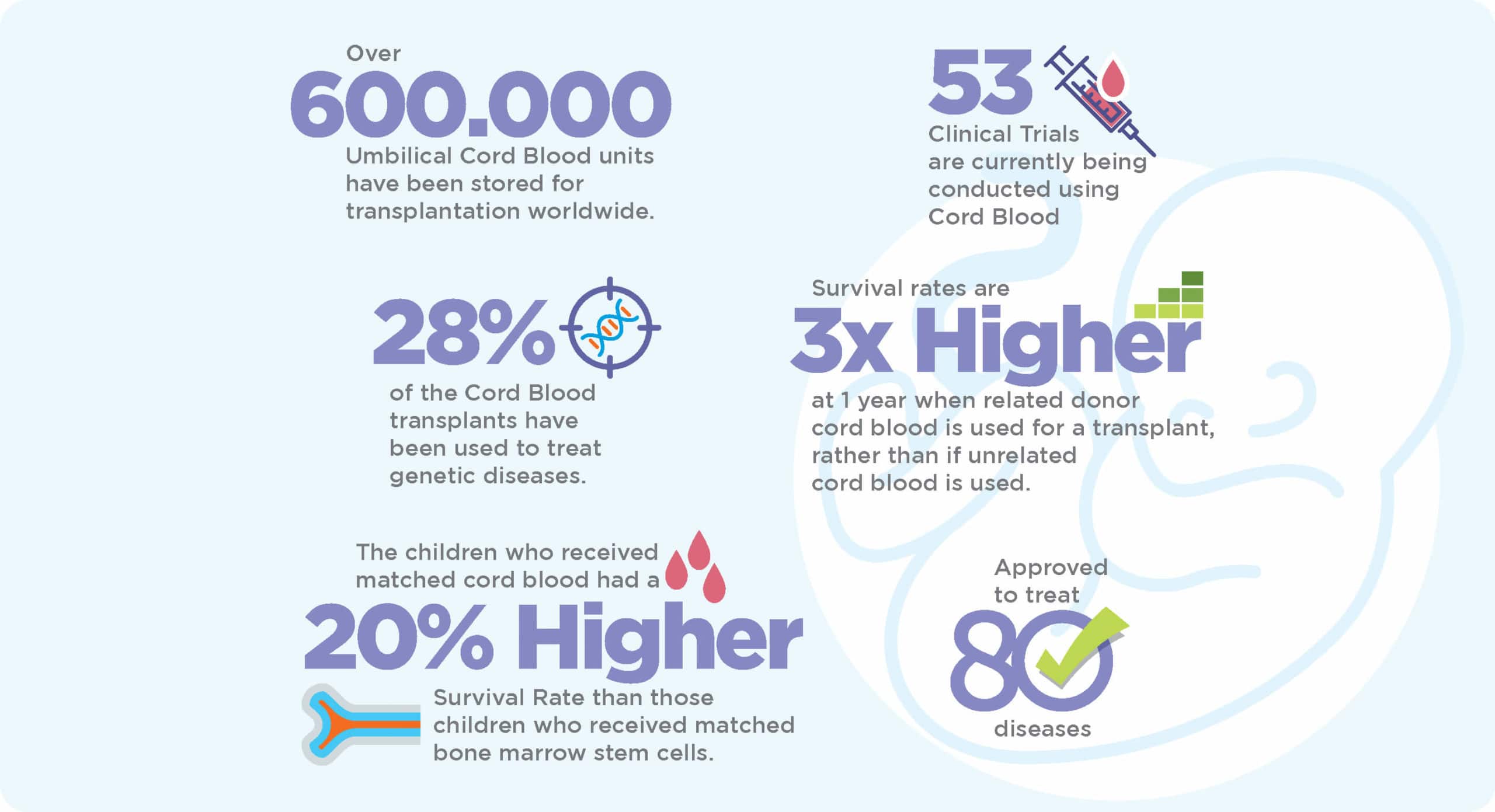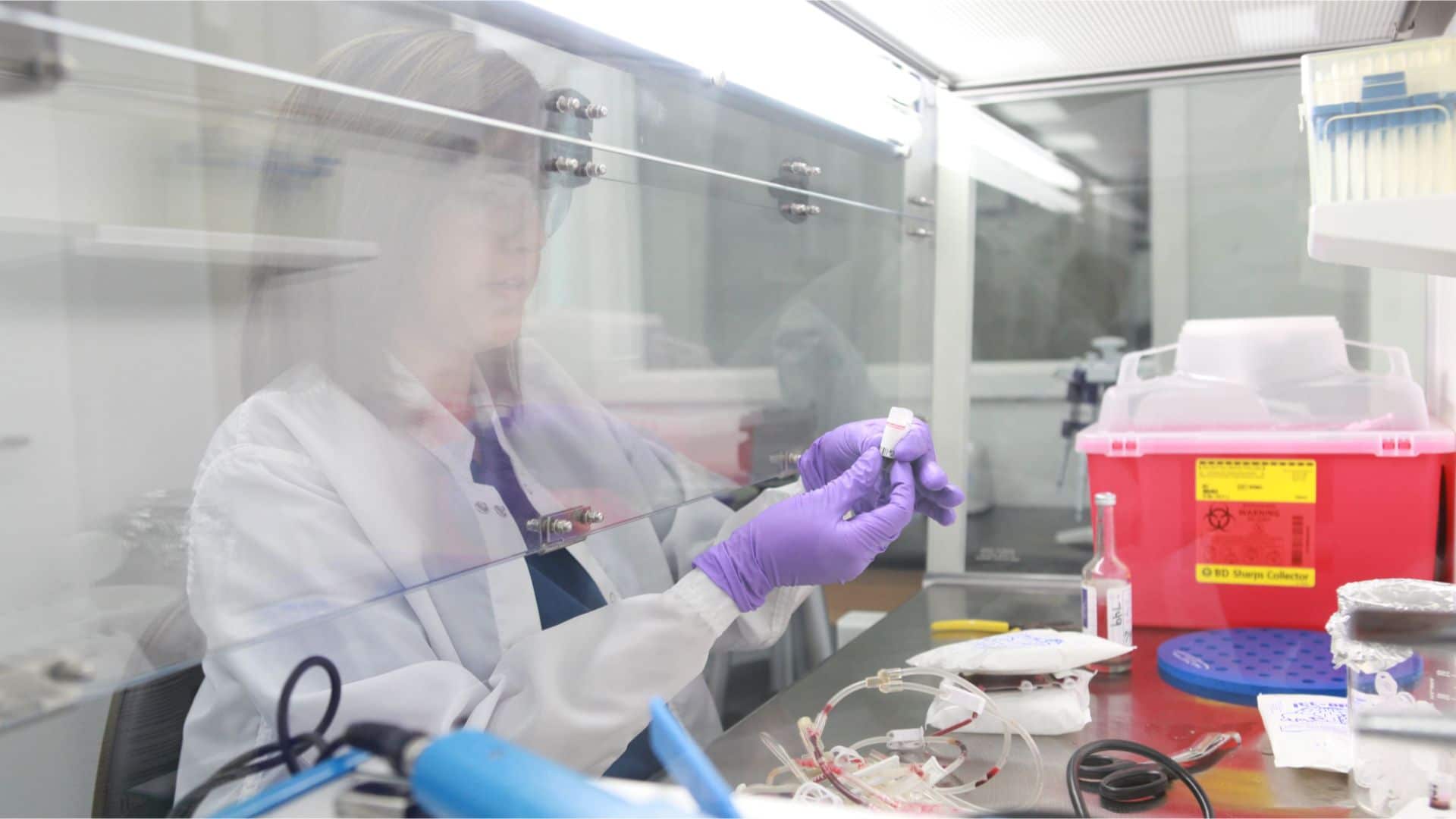Do you know what cord blood is?
Umbilical cord blood is today one of the most precious organic elements in modern medicine. Thanks to its rich source of stem cells, it is a powerful resource against possible diseases that could affect your baby and their family.
Umbilical cord blood stem cells can be collected after the birth of your child and can be a future life-saving source for your baby and potentially other family members.
Why is it a safe and accurate method? Your baby is a perfect match for their stem cells, so there is no chance that your child will reject them.
These cells have already been used in transplant medicine to treat approximately 80 diseases, such as leukemia, lymphoma, myeloma, and other cancers.
Cord blood is the future of regenerative medicine. Umbilical cord blood is one of the focal points of current research and applications in regenerative medicine, where stem cells can help induce healing or regenerate cells and repair tissue. These experimental therapies include treating cerebral palsy and traumatic brain injuries, juvenile diabetes, heart disease, and stroke.
Umbilical cord blood serves as a cellular therapeutic treatment for many diseases

The collection poses no harm to the newborn or the mother.

Approved to treat 80 diseases that were once untreatable.

Does not require an exact match like bone marrow.

Immediate availability, which can minimize disease progression with early treatment.

Can be used for the baby or a family member.

Higher rate of engraftment over bone marrow cells.

Treating diseases beyond traditional transplant medicine, such as Autism and Cerebral Palsy.

Can be used for the baby or a family member

Higher rate of engraftment over bone marrow cells

Treating diseases beyond traditional transplant medicine, such as Autism and Cerebral Palsy
This is how we collect stem cells from the umbilical cord
After your baby is born, the placenta and umbilical cord, normally discarded as medical waste, contain stem cells that can be collected and stored for future therapeutic applications.
The collection procedure is completely risk-free and painless for both mother and child. This collection is done quickly and efficiently by venipuncture, as gravity facilitates drainage of the umbilical cord blood into the collection bag.

Cord Blood today

How is Cord Blood used in medicine today?
Hematopoietic cells are currently the only treatment option for patients with certain blood, immune disorders, and metabolic disorders, including types of myeloma, leukemia, and lymphoma.
Patients with these diseases receive large doses of chemotherapy and radiation therapy, which destroy the diseased cells in their bodies. This is followed by a stem cell transplant to replace these cells with new healthy cells.
Clinical trials are also exploring new ways to use cord blood. The FDA has approved hundreds of trials, and researchers discover new therapeutic applications every year.
How is Cord Blood used in medicine today?
Hematopoietic cells are currently the only treatment option for patients with certain blood, immune disorders, and metabolic disorders including types of myeloma, leukemia and lymphoma.
Patients with these diseases receive large doses of chemotherapy and radiation therapy, which destroy the diseased cells in their body. This is followed by a stem cell transplant to replace these cells with new healthy cells.
Clinical trials are also exploring new ways to use cord blood. Hundreds of trials have been approved by the FDA, and researchers discover new therapeutic applications every year.

We are here to preserve the well-being of your family

Treatables
diseases
Immunodeficiencies
Bone marrow failure syndromes
Metabolic disorders
Cancers
Blood disorders
Hemogobinopathies

Treatables
diseases
Immunodeficiencies
Bone marrow failure syndromes
Cancers
Metabolic disorders
Blood disorders
Hemogobinopathies
Current conditions being evaluated for treatment
by cord blood in Clinical Trials include:
Autism
Spinal Cord injuries
Hearing Loss
Heart Failure
Brain damage
Multiple sclerosis



